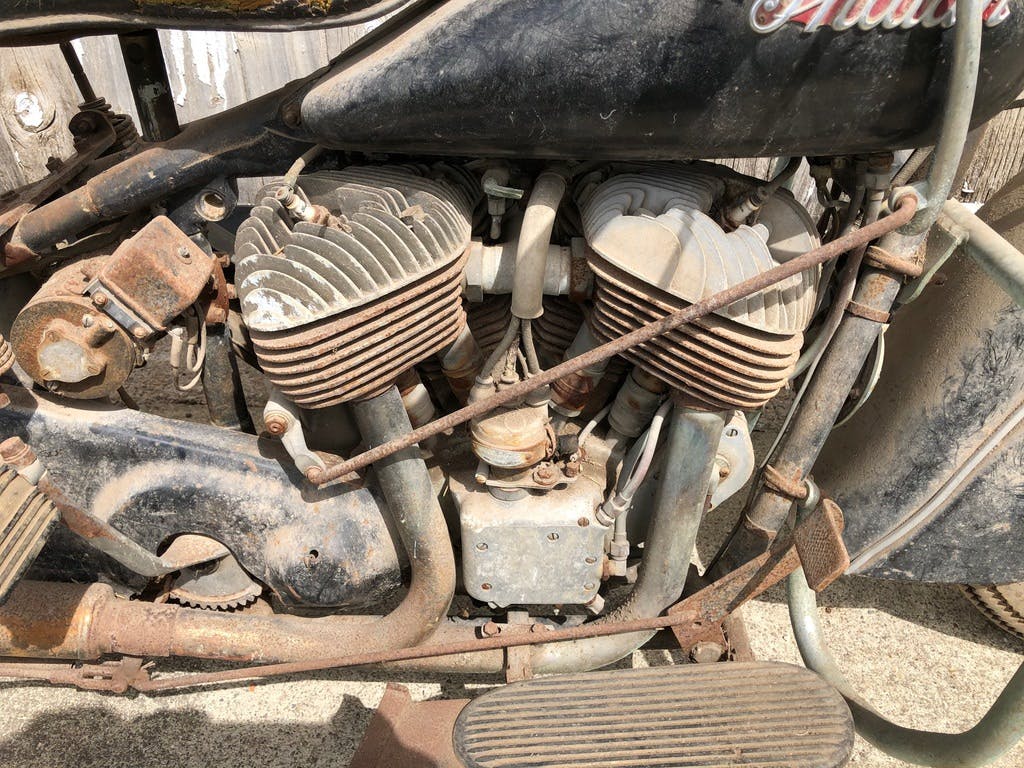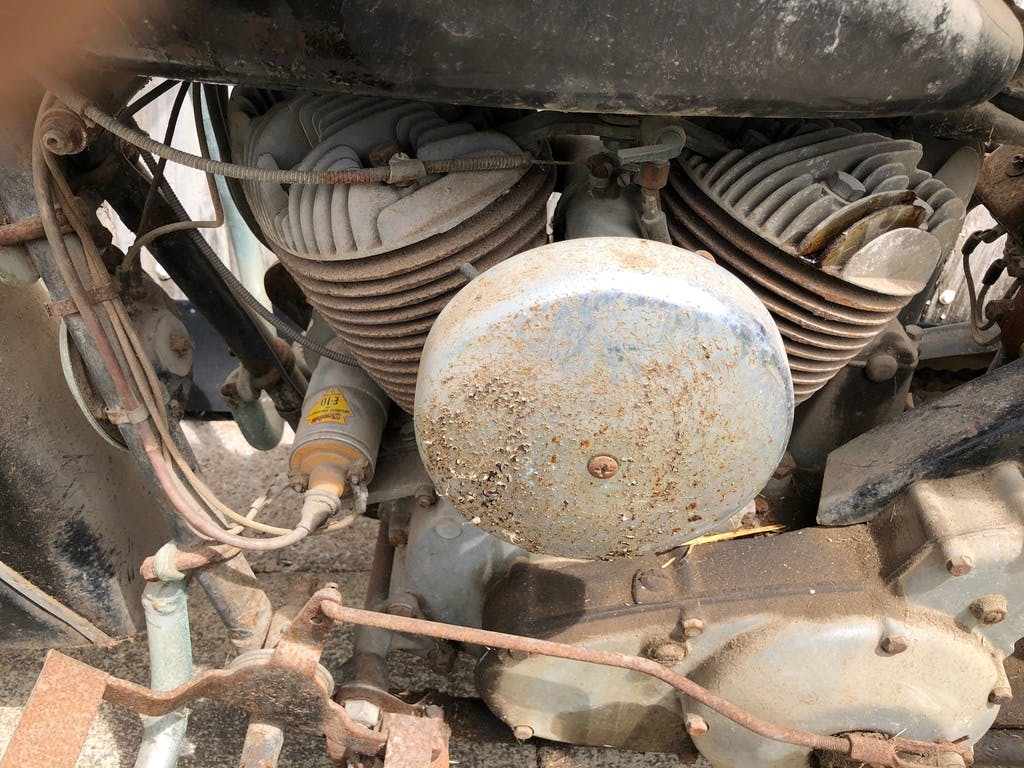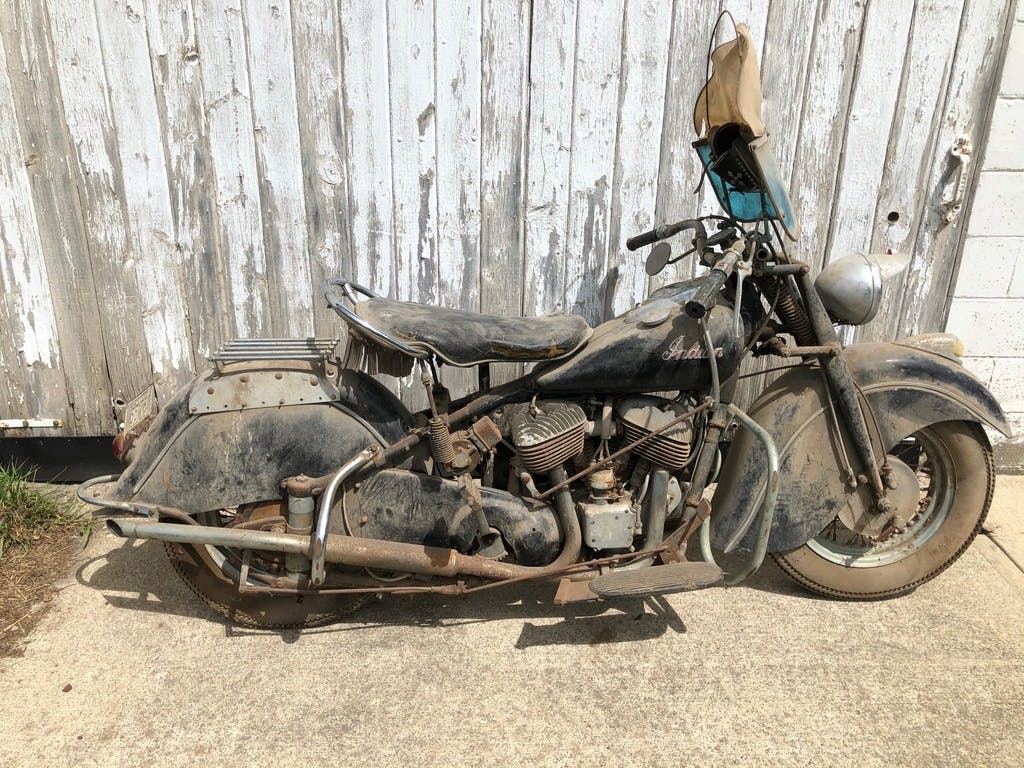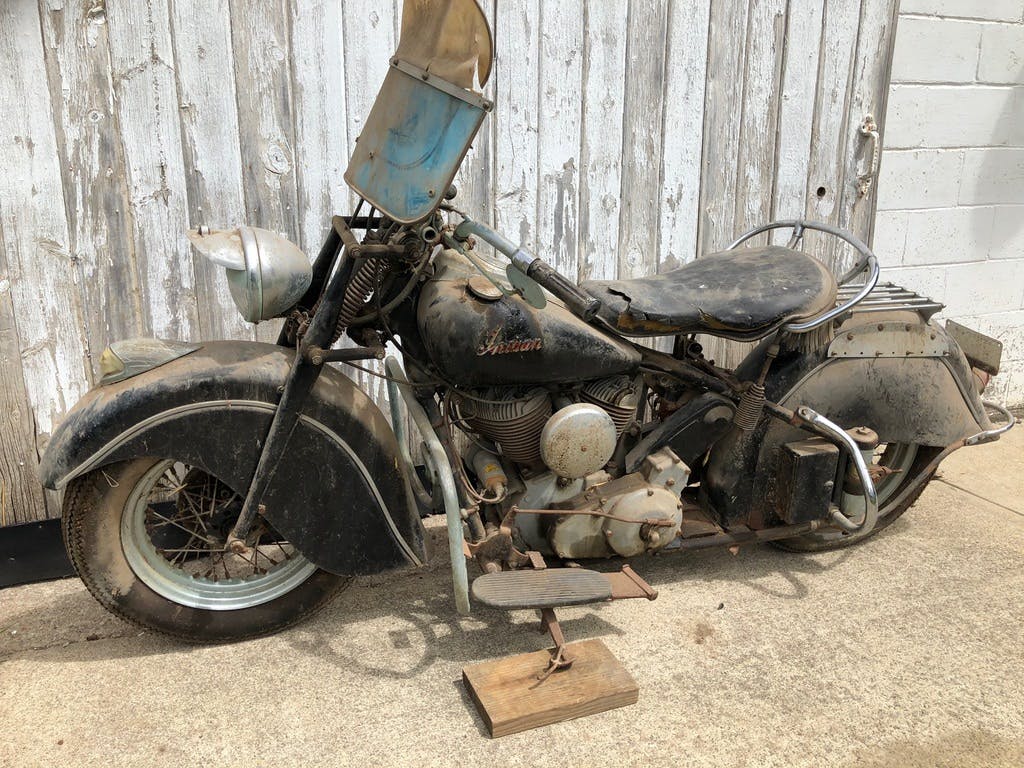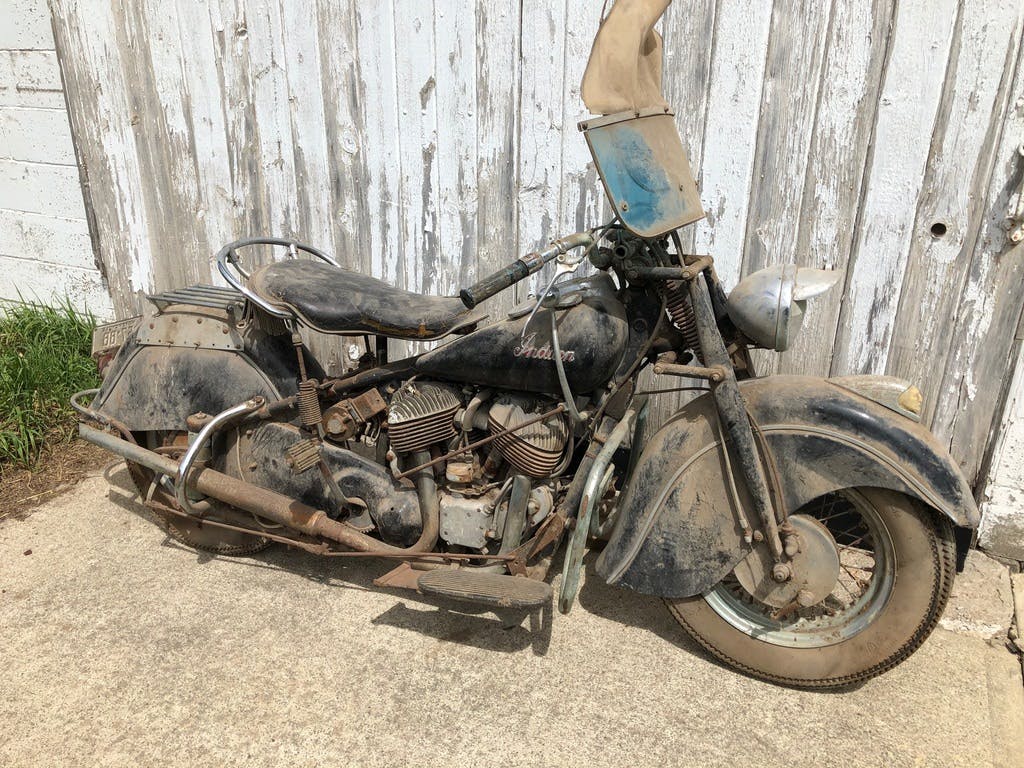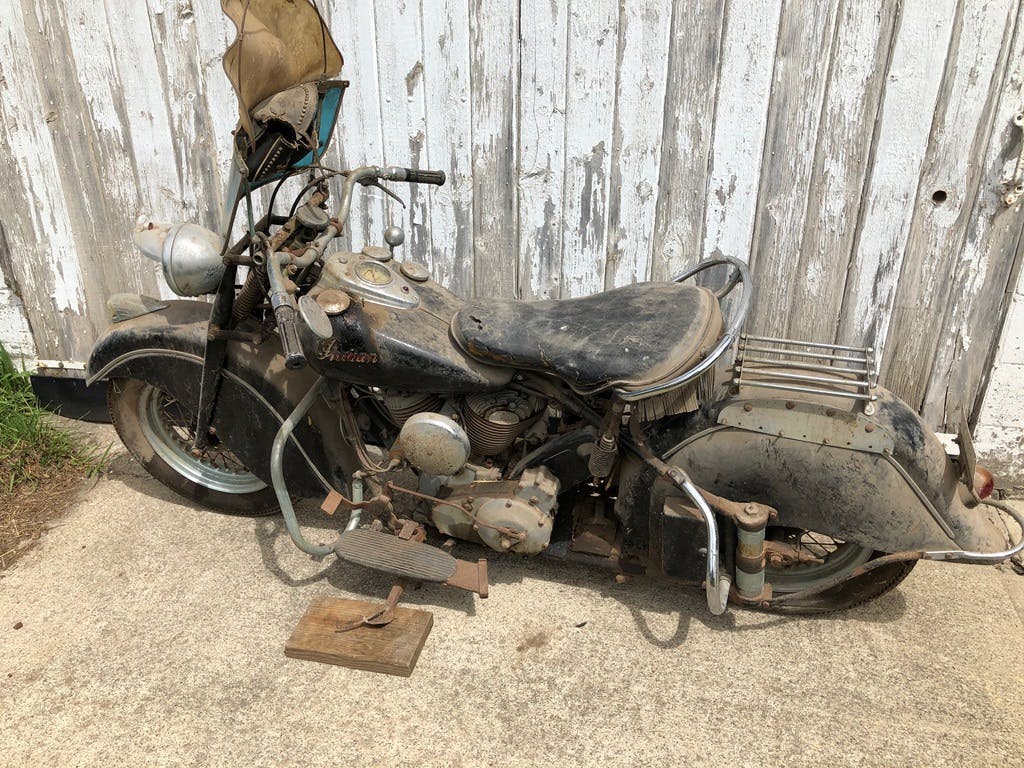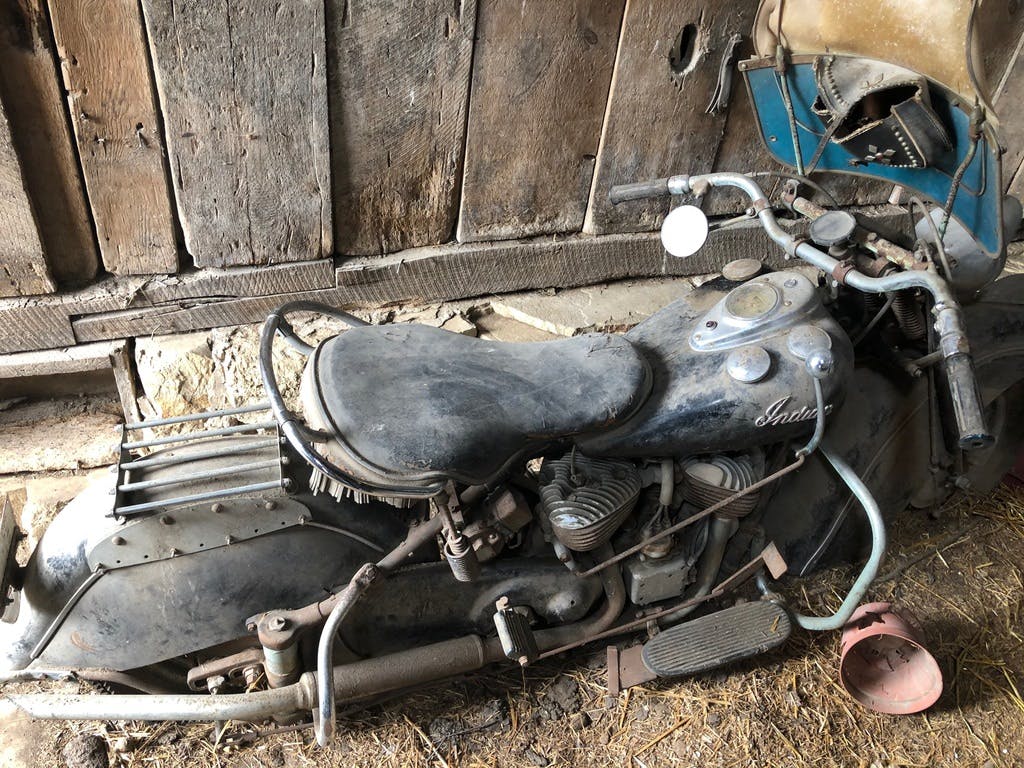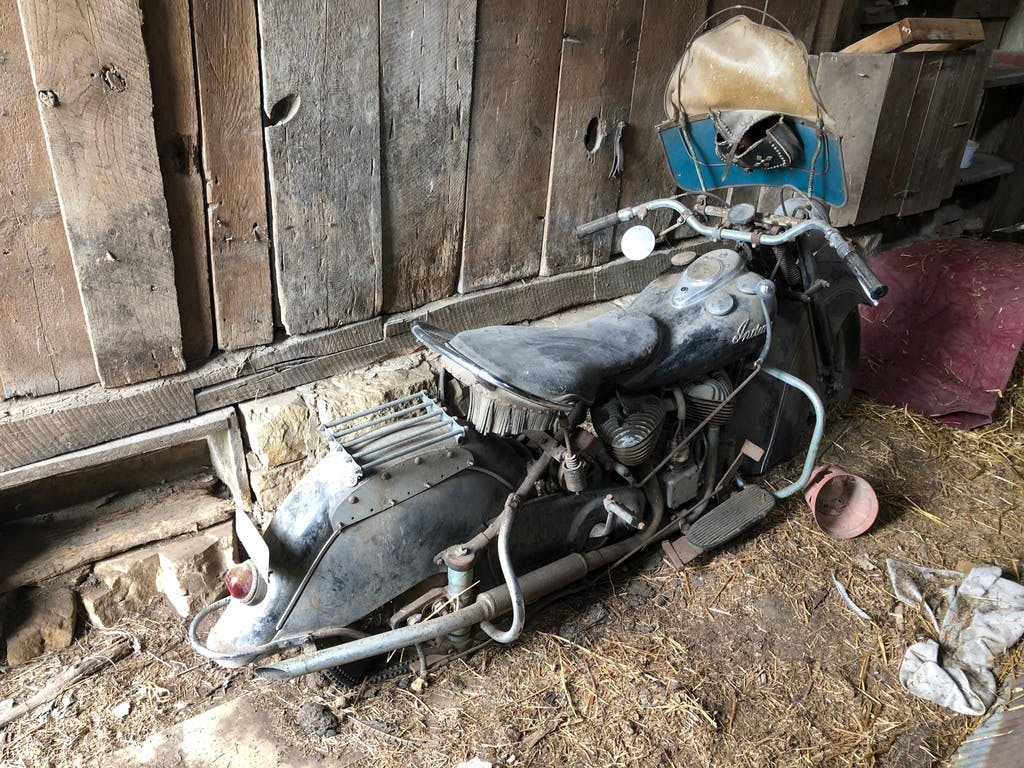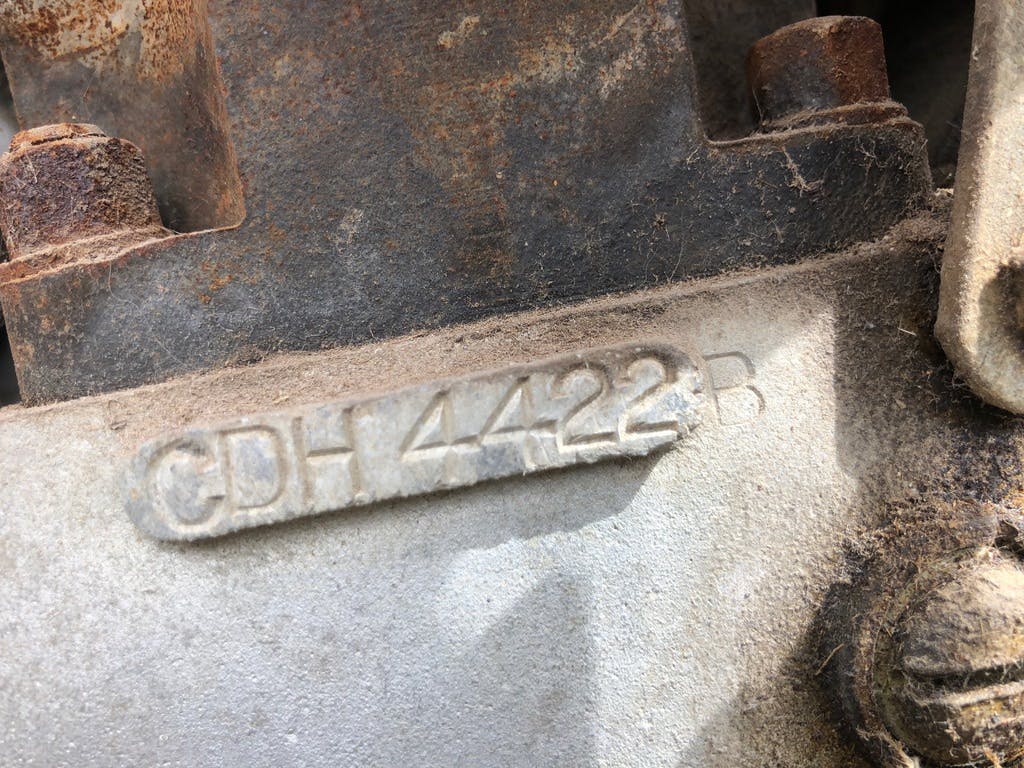How a grimy Indian Chief can merit a concours-condition price
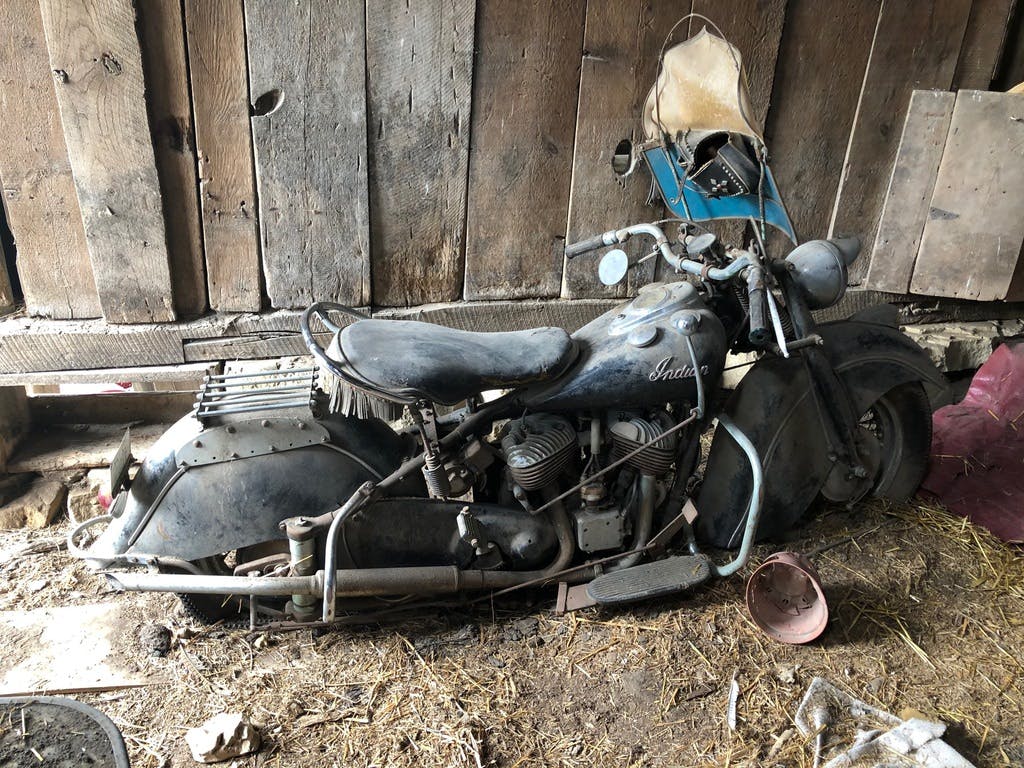
When we see rust, dirt, and grease on a collector vehicle, we don’t usually expect a hefty price tag. In a select few cases, however, the right amount of dirt and history makes a dirty vehicle a valuable vehicle—#1-condition (Concours) valuable. This is especially true in the world of motorcycles. So how can a #4-condition motorcycle bring #1-condition money?
The frenzy over barn-find-fresh vehicles at auction peaked in 2015, but today’s buyers still leap at the opportunity for a rare motorcycle covered in grime that accumulated over years in a New York garage or inside a Michigan barn. Any old bike won’t get people excited; staple collection motorcycles, especially American ones, brought out from the dark are the real attention-getters.
This barn-find 1948 Indian Chief is on offer from VanDerBrink Auctions until August 15, and it checks all the boxes required for a compelling barn-find bike. Tim Graber—proprietor at Classic Motorcycle Consignments, a shop that specializes in American motorcycles—says that this Indian Chief example “is worthy of a Concours rating on the Hagerty Price Guide when it is running.”
Early American motorcycles sit on a higher pedestal than most when it comes to barn finds, and we’ve already noted that the perfect amount of patina can put a bike on par with a flawlessly manicured, concours-quality example. The Hagerty Motorcycle Price Guide notes in the #1-condition (Concours) description that “early 1900s original barn find motorcycles with excellent sheet metal and good original paint that are running and clean can fall into this category,” even though the definition of “barn find” usually includes scrapes and dents.
Since motorcycle values sit much lower than those of cars (60 percent of motorcycles in the Hagerty Motorcycle Price Guide have a #3-condition (Good) value below $5000), the price increments between different-condition bikes are often much smaller than those between comparable-condition cars. For instance, the difference between a #1- and a #4-condition (Fair) Indian Chief might only be $20K. (In comparison, the gap between a #1-condition 1969 L46 Chevrolet Corvette and an identically-spec’d #4-condition example is $40,700.) For an avid bike enthusiast with money to spend, that $20K upgrade from a #4- to a #1-condition bike is well-worth the opportunity to take a trip to WWII-era America. Not only do motorcycle buyers pay less for the same level of historical significance, but motorcycles are easier (and thus cheaper) to service than cars.
Buyers are recognizing the value of these barn-find bikes and the opportunities they bring due to their rarity, history, and condition. Without the original parts or the story of being tucked away for years, a bike like this Indian Chief would idle at the low end of the value spectrum, but the rarity of an original motorcycle that has sat untouched for years and the chance to resurrect history elevates such a barn find to the top end of the market.
What each buyer is paying for is different, but everyone is valuing in some way the originality, correct parts and excellent sheetmetal, and rarity. Some are also paying for the opportunity to be the person to clean off the dust and bring the motorcycle back to life. To them, seeing it cleaned before they get their hands on it would provoke a heart attack.
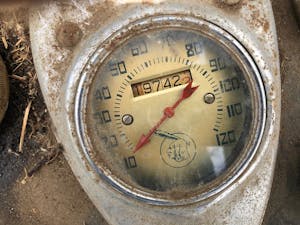
As with any collector vehicle, but especially for early American bikes, Graber warns that the key is in the details; it always pays to be overly cautious. He suggests examining the type of surface rust to see whether it corresponds to the bike’s purported long-term storage. With this Chief in particular Graber notes the brown plastic cover on the floor under the front tire and the way the dirt blew upon it.
Don’t be afraid take your time and analyze whether the grimy accumulation around a barn find (whether two- or four-wheeled) looks natural. There are people who “restore” bikes to look like barn finds using acid-wash techniques and faux paint; if someone can fake a Van Gogh, then someone can do a darn good job faking a barn find.
After looking at this Chief, Graber says that “it looks to be a real barn find but I am not 100 percent sure.” The good news? It appears to retain all correct parts in addition to some unique period accessories, which are almost guaranteed on bikes from a period in which you could custom-order anything from the factory.
If you’re preparing to pay $30K or more for this motorcycle, don’t forget that the tarnish and patina are part of the reason why. Should you become this Chief’s next owner, don’t clean it too much; Graber suggests wiping down all surfaces with a mixture of kerosene and water (1 teaspoon of kerosene to 1 gallon of water). If you do that, and get the bike mechanically sound, your #4-condition investment should stick strong at #1-condition values.
Like this article? Check out Hagerty Insider, our e-magazine devoted to tracking trends in the collector vehicle market.
